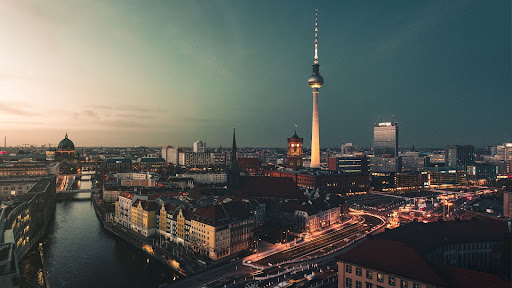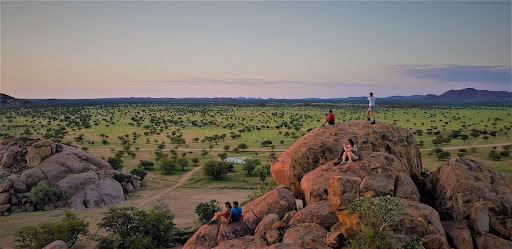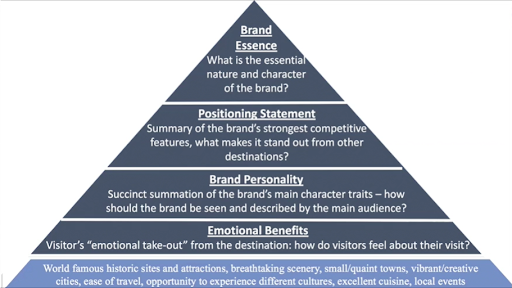Want to learn how to successfully make your destination stand out from the competition? This article tells you all about destination branding and how to build your own original brand!
How to Build a Successful Destination Brand
The tourism industry is one of the most universally robust industries in the world. Hundreds of thousands of people travel every year, and there are many types of travelers who feed into the industry. Even more people work in the tourism sector. So, how do you attract potential visitors to your tourism destination?
There are plenty of approaches to attract potential customers to a tourist destination. Social media, marketing campaigns, and word of mouth are just a few ways to achieve this. You might see photos of dazzling landscapes on Instagram, see a hotel ad on TV, or read a post about a famous tourism destination in a magazine. What these things have in common is a recall to what makes a destination unique, important, or appealing to a specific audience.
Bringing these features out through tourism marketing is a tactic called destination branding. Think about a famous city—Berlin, for instance. There are a number of images that you probably think of when Berlin comes to mind: the (in)famous Berlin Wall, the unmatched cosmopolitanism, the tall-standing TV Tower, and the authentic Brezeln. A collection of cultural markers like these produces a profile that is unique to Berlin. These markers can then be used to produce and to employ a marketing strategy that attracts potential tourists to Berlin. Of course, this is not specific to just one city; any site can have a brand identity.
So, the question remains: how do you produce a successful brand for your site? Below, we have compiled a short list of items to get you started on building a successful destination brand.


Berlin TV Tower (Fernsehturm) has become an iconic piece of Berlin’s identity, completing the panorama of the city alongside Brandenburg Gate or the Berliner Dom
A Brand is the Most Valuable Tool in your Marketing Strategy
A brand goes far deeper than a logo or company slogan. These are simply considered marketing tools. A brand is defined by the public perception and the emotion it makes you feel. It is the promise being made to the target audience that is derived from the product or destination’s uniqueness. Your branding efforts are the process of creating brand messaging and experiences that attract visitors. These should be as compelling and memorable as possible, in order to draw in potential customers. Successful branding occurs when this experience remains in the hearts and minds of the target audience.
Developing a Valuable Destination Brand Identity
Developing your brand identity, or brand personality, revolves around three main axes:
- Destination uniqueness;
- Stakeholders’ and travelers’ perceptions; and
- Consistency in the marketing campaigns.
A strong brand identity is essential when you are trying to reach potential tourists and attract them to your destination. We could define the brand identity as a summary of the destination’s main traits, the words your main audience would use to describe the destination.
Does your destination offer a wide array of cultural experiences? Are most visitors coming to your destination to relax, or do they come to challenge themselves and take on new adventures? Is your destination mostly suitable for families, groups of friends or romantic getaways?
Developing your brand identity starts by auditing your destination and identifying your main target. It is recommended to involve stakeholders to better understand how they perceive the uniqueness of your destination. Start a conversation with small tourism businesses, travel agents and tour operators promoting your destination, local authority or former visitors and gather their emotions about your destination.
Including the consumer perception of your destination will ensure that the appropriate types of travelers are targeted in your brand messaging. Do not neglect to take a look at competition – locally or internationally – and to think it through: “What do I offer that is different?”, “What is our added value?” You can read an example of destination branding through consumer perceptions from Croatia.

The wide open Namibian landscape – understanding the consumer perception of your destination’s uniqueness is key to build a strong brand identity
Understanding the travel motivations of your visitors, as well as their decision-making process, will support you in building a suitable brand messaging. Associate experiences with your destination which are as distinctive, compelling, memorable and rewarding as possible. Take the example of Namibia’s online marketing campaign which Solimar ran between 2011 and 2013 that emphasized the breathtaking and seemingly endless natural landscapes of Namibia.
Once this message is clear, your marketing campaigns will help spread your identity and reach your targeted audience. The key in the marketing campaign is consistency! Make sure the brand messaging perceived is coherent on all the elements of your integrated marketing communication. Each support and channel should represent the same brand identity.
Moreover, the consistency of the brand identity continues on the spot where it is important to build brand value at each point of contact, from signage at the airport to landscapes while driving to the hotel or between parts of a destination. The experience of the traveler must reflect your brand identity.
Finally, keep track of the success of the campaign and reassess your strategy every year, or if a major event has disrupted your campaign (Covid-19 anyone?).
In short, developing a powerful brand identity consists of:
- Running a destination audit
- Clarifying who is your target
- Building your destination SWOT
- Identifying your competition, their location, and your added value
- Involving local stakeholders in your branding process and assess their perception of the destination
- Reassessing your Marketing Strategy annually

Using the Brand Pyramid for a Strong Destination Brand
One of the most effective ways to produce a powerful destination brand is by using a brand pyramid. Brand pyramids are models that distill the important elements of a site down to an advertising essence. Brand pyramids are important for destination branding, because they clarify the most important aspects of the destination. This helps produce a tagline that markets the message of a destination to potential visitors.
There are five tiers in the brand pyramid, which are organized from a wide base to a narrow top. The first tier, labeled rational attributes, are tangible destination characteristics. In other words, rational attributes are the markers that can be empirically observed. The physical, quantifiable features of a site are listed here. These features can be diverse, ranging from unique products and services to local cuisines to historic landmarks.
The second tier is labeled emotional benefits. These are the feelings associated with a site. This tier plays a crucial role in creating a destination brand, because it addresses the tangible emotional experience(s) of visiting a site. The first two tiers work together to create a strong brand image by listing tangible attributes alongside the emotional sentiments that the site produces.
The third tier of the brand pyramid is brand personality. This lists a group of adjectives that describe the personality of the site. This is how a target audience will describe a site in a few basic words. The brand personality can describe atmospheres and resources, and they can also attract specific audiences. As the public health situation evolves, a brand personality can illuminate how amenable a site is to a specific audience.
The fourth tier, the positioning statement, describes the one-of-a-kind site attributes. Here, brand developers ask which characteristics are seen or experienced only at that site. This is an especially important step in the brand development process. Knowing what makes a site stand out will give shape to a strong brand identity.
The final tier is brand essence. The brand essence is exactly what it sounds like: it distills aspects of all the tiers below to produce an essential brand identity. This is what the brand means, described in a few words. This is the tier that creates a destination brand, usually in the form of a tagline. A great example of the destination branding process was successfully implemented in Solimar’s Jamaica Community Experiences project from 2015-2018.

Brand Pyramid model to build a powerful destination brand – Solimar DMO Development Program
Looking for more destination development strategies? Check out Solimar’s Institute for Sustainable Destinations program on DMO Development. Or Contact Us directly for information!
Authors: Caitlyn Marentette / Célia Hulin / Thomas Kalchik

